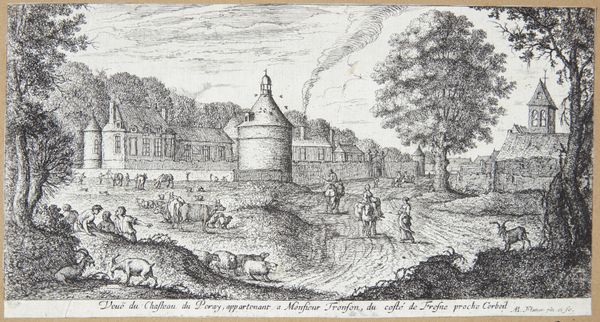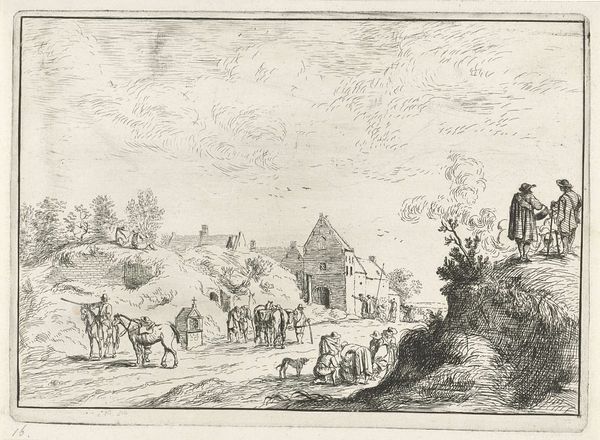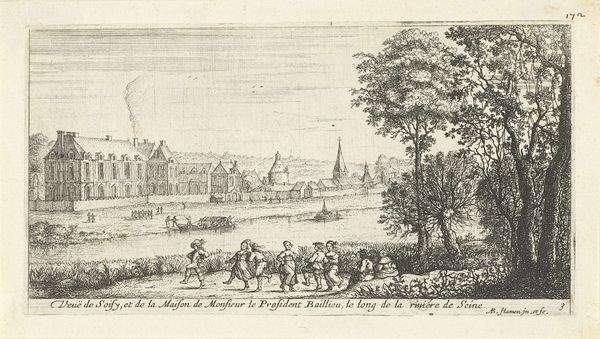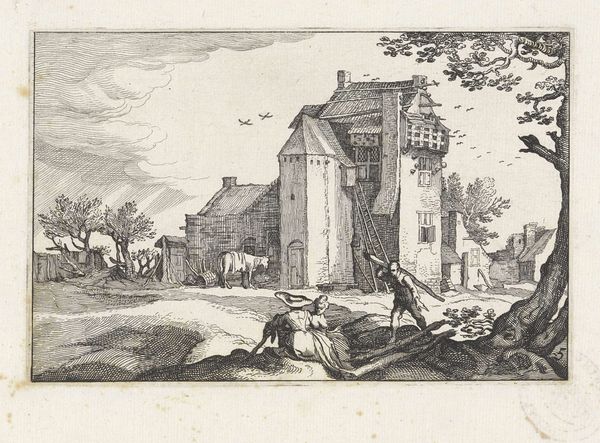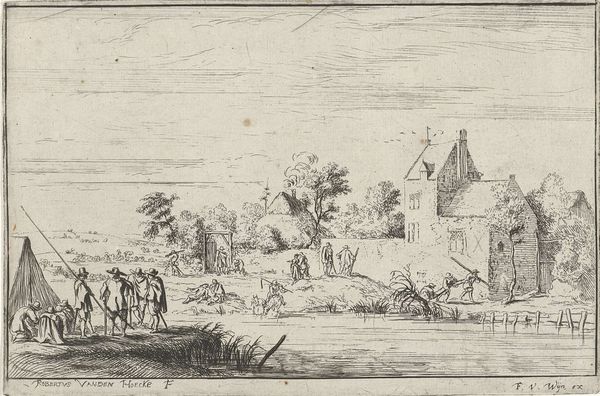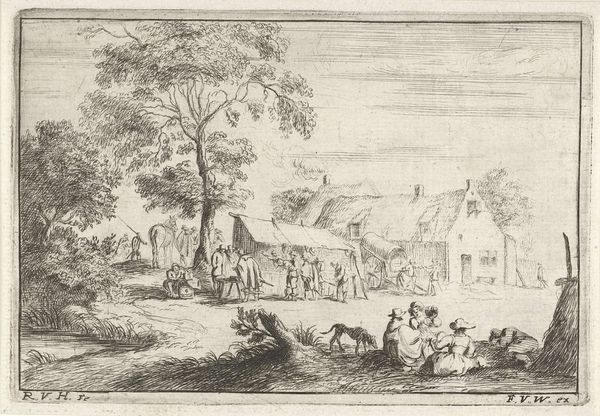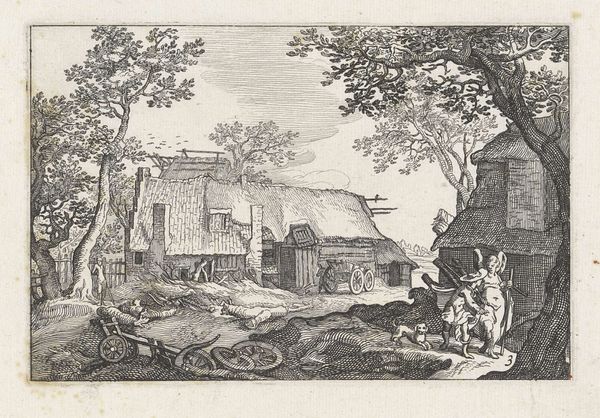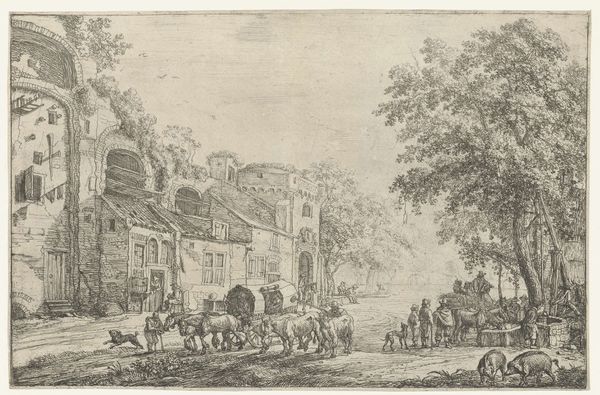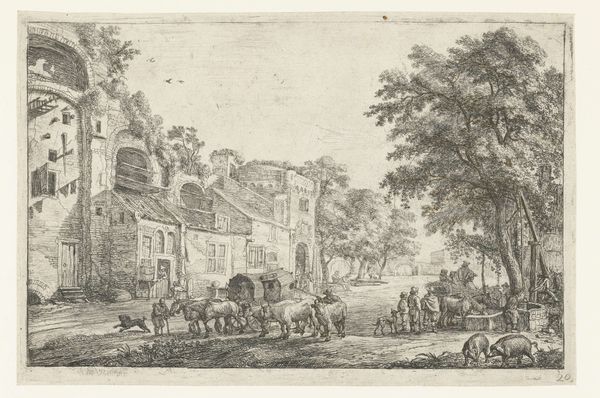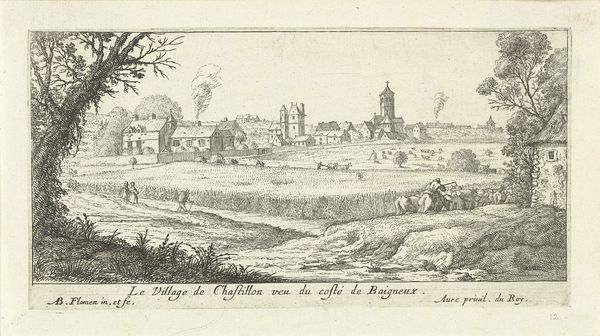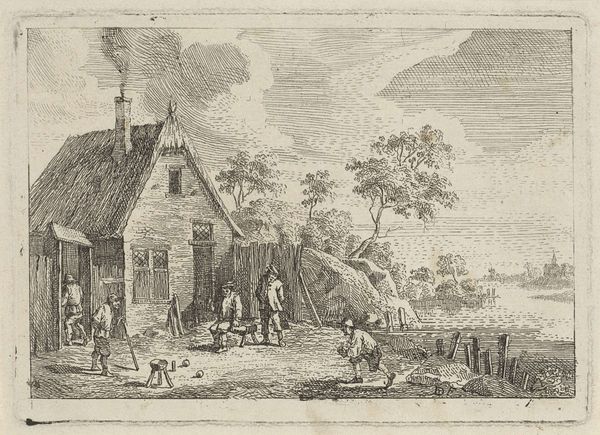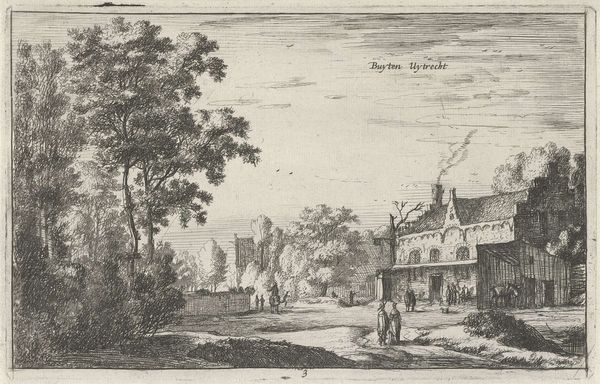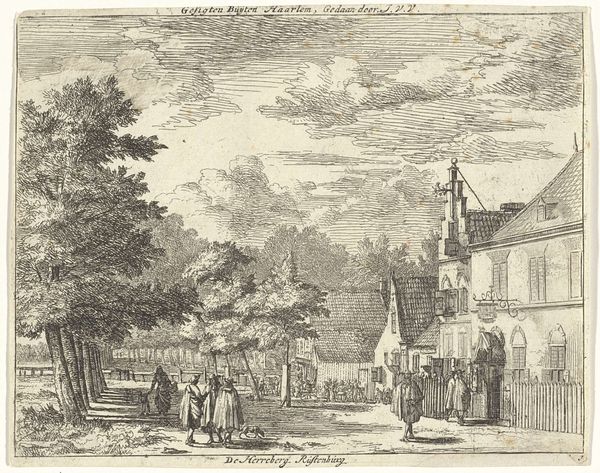
drawing, print, etching
#
drawing
#
baroque
# print
#
etching
#
landscape
#
genre-painting
Dimensions: height 113 mm, width 215 mm
Copyright: Rijks Museum: Open Domain
Albert Flamen made this print of Kasteel de Peray using etching, a printmaking technique dating back to the 15th century. The process involves coating a metal plate with a waxy, acid-resistant substance called a ‘ground’. The artist then scratches an image into the ground with a needle, exposing the metal. When the plate is immersed in acid, the exposed lines are etched into the metal. The plate is then inked and printed, transferring the image onto paper. The lines in the image bear the mark of this corrosive process. Think about how the material qualities of the metal plate, the acid, and the artist’s touch all contribute to the image. The etched lines allow for fine details and tonal variations, essential for depicting the architectural details of the castle and the surrounding landscape. Ultimately, the image represents a particular economic reality, immortalized through the skilled labor of the printmaker. Appreciating the craft involved allows us to move beyond the picture, and towards an understanding of the social context in which it was made.
Comments
No comments
Be the first to comment and join the conversation on the ultimate creative platform.
